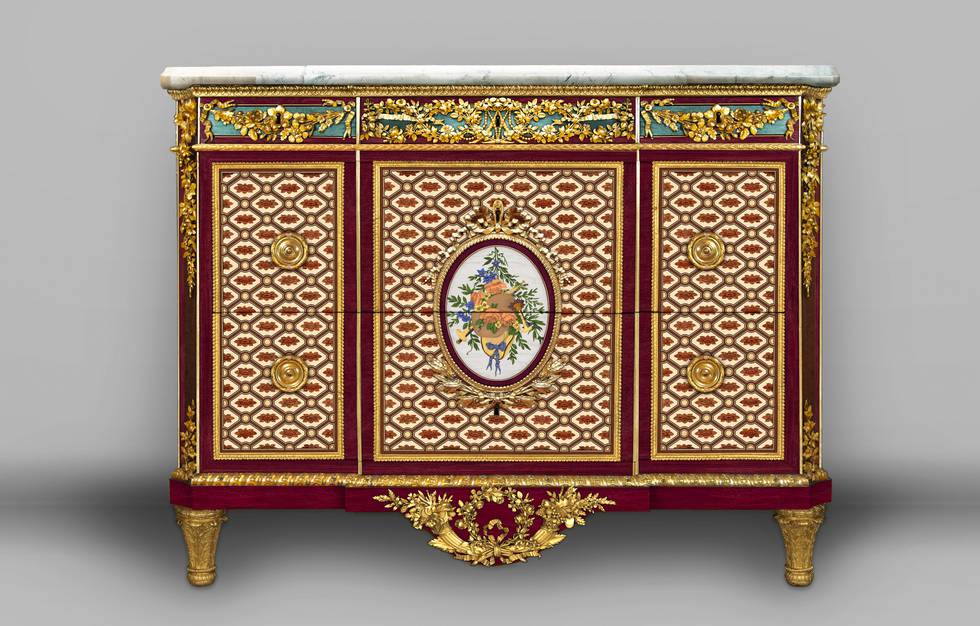Marquetry has often been referred to as ‘painting in wood’, and this is especially true of the marquetry created by Riesener. His furniture was prized for the quality of its marquetry in the 18th century, and it remains so today. However, the comparison of marquetry to painting is perhaps a bit misleading, as it does not take into account the complexity of its construction.
Marquetry is in fact made up of many individual pieces of wood veneer which have been assembled into predetermined patterns and images, much like a jigsaw puzzle. For example, the chest-of-drawers Riesener made for Marie-Antoinette in 1780 is decorated with trellis marquetry. Each one of the trellis compartments contains a flower of twelve pieces, a background, and sixteen pieces of black and white stringing around the edge.
Every one of these pieces would have been cut out from larger sheets of veneer by a marqueteur (a marquetry cutter) using a variety of tools, such as fretsaws and knives, and glued to a substrate. Riesener’s marquetry is known for its realism, and the way that flowers and foliage break out from their panels into surrounding borders. The small knife marks around these veneers would suggest they were created by being cut and inlaid into the surfaces of neighbouring areas of veneer.
The substrates to Riesener’s marquetry are sometimes formed of multiple sheets of veneer laminated together, separate from the carcase, which strengthened the marquetry against the splitting often caused by shrinkage. This technique also allowed for the marquetry to be prefabricated, perhaps off site at a different workshop, and assembled later in Riesener’s workshop, helping him speed up production processes and to produce more furniture in a shorter amount of time.
When looking at Riesener’s furniture today, we are often confronted with marquetry that is brown and faded. However, when delivered, Riesener’s marquetry would have been a riot of colour and detail. Each piece of veneer used in the marquetry was either naturally coloured or dyed. A number of techniques were also used to heighten the naturalism of the marquetry designs. For example, pieces of veneer would have been placed in hot sand to darken their edges, creating a shadow effect, and once fully assembled, the surface of marquetry would have been engraved with an engraving tool and filled with coloured mastics (fillers) to give it fine decorative features.
Unfortunately, these colours and details have diminished over time due to light damage, wear and tear and treatments often carried out to enhance the faded colours. Sometimes veneers that have been concealed from this damage give us a better understanding of the original colour schemes Riesener devised for his furniture. Again, the chest-of-drawers made for Marie-Antoinette in 1780 shows a discoloured green frieze running beneath the marble, but removal of one of the gilt-bronze mounts revealed it was originally a turquoise blue colour.
Similarly, the trellis marquetry appears in shades of brown, but the underside of a piece of marquetry shows that the background was an off-white, the flower red and the stringing black and white.
This information, along with technical analysis, has allowed us to create a digital reconstruction of the possible appearance of this chest-of-drawers when Riesener first delivered it to Versailles.
